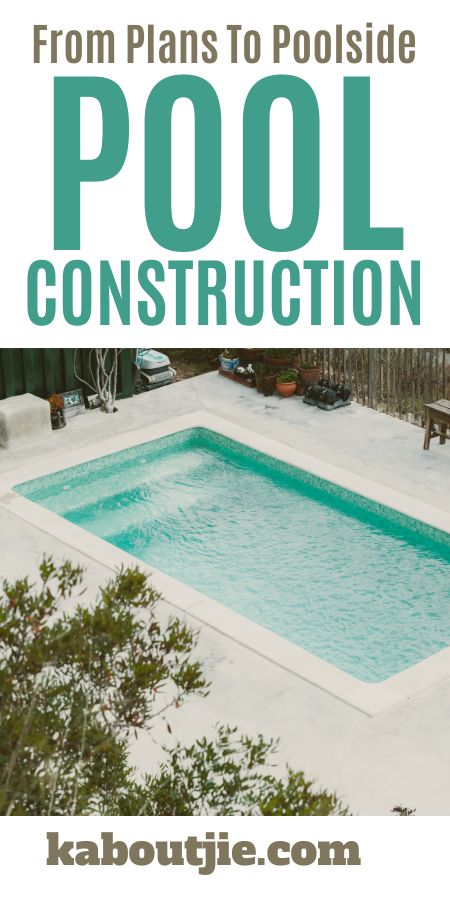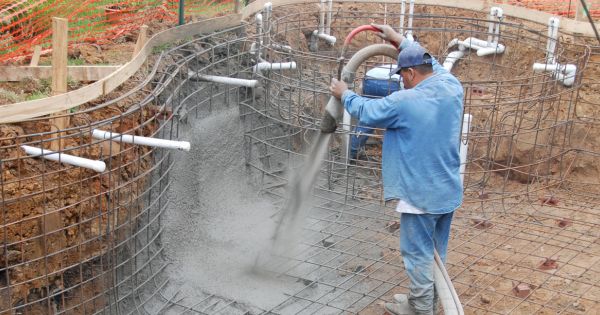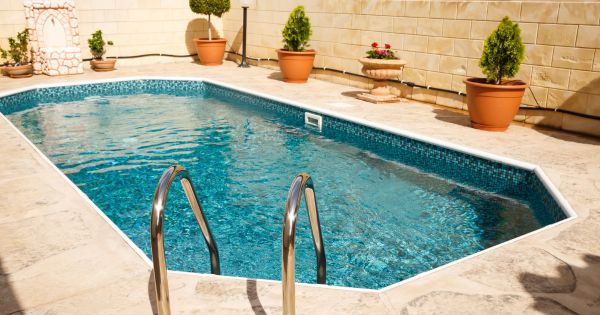Considering building a pool? It’s more than just a hole in the ground filled with water. Pool construction is a journey that takes careful planning, precise execution, and the right expertise to transform your backyard into a personal oasis. And let’s be real—while it’s tempting to take on a DIY approach, leaving it to the experts often brings fewer headaches and faster results. Here’s a deep dive into each stage of the pool construction process, what you can expect, and why turning to professionals might be the best decision you make for your future poolside paradise.

1. Initial Consultation and Design – Setting the Vision
The swimming pool construction journey starts with a vision. You may already have an idea of how you want your pool to look, but bringing those ideas to life requires technical know-how and creative design skills. In this phase, pool designers and contractors sit down with you to discuss your goals.
Do you want a classic rectangular pool for laps? Or perhaps a more natural design that blends with the landscape? Designers and contractors will map out the possibilities, asking questions like:
- How will the pool be used? (For exercise, relaxation, family fun?)
- What’s your preferred shape, style, and size?
- Do you want special features like waterfalls, lighting, or a spa section?
Once they understand your vision, they draft a detailed plan, ensuring it fits within your property’s layout and adheres to local building codes. This stage is all about aligning the design with your lifestyle and making sure it’s feasible within your budget.
Now, it’s time to get the green light to break ground. Most pool projects require engineering work and permits before construction can begin. Depending on your location, you’ll need approvals from local councils, zoning boards, and possibly homeowner associations. Engineers step in to ensure the pool design meets safety standards, won’t disrupt surrounding structures, and can safely handle the water load.
This process can be time-consuming and often involves submitting blueprints and detailed construction plans. But here’s where having experts makes a difference—professionals know the ins and outs of local regulations, speeding up the permit process and ensuring you avoid costly delays.
3. Excavation – Bringing the Vision to Life (Sort of)
Once permits are in place, things start getting real. Excavation is when the actual shape of your pool starts forming in your backyard. Heavy machinery arrives to dig the precise dimensions outlined in the design. It’s a messy stage, and it’s not uncommon to encounter some surprises—like hitting rock or underground water—especially if you’re on varied terrain. But this is where the skill of a seasoned contractor pays off. They’re prepared to handle unexpected conditions and keep the project on track.
Excavation typically takes a few days, depending on the size and complexity of the pool. It’s fast work but requires careful attention to detail, as this is the foundation of your pool.

4. Structural Framework and Plumbing – Laying the Backbone
With a hole now carved out, the next stage is constructing the framework that will support your pool. Builders install a steel rebar structure around the excavation area to reinforce the pool’s shape and ensure long-term durability. This framework will handle the weight of water and withstand ground pressure over time, keeping your pool structurally sound for years to come.
During this phase, plumbers also install essential piping systems for water circulation, drainage, and filtration. Without well-planned plumbing, maintaining water quality would be a hassle, so this is where professional experience is invaluable. The plumbing network is embedded within the structure, ensuring a clean, efficient system that keeps your pool fresh and sparkling.
5. Pool Shell and Surface Finish – Adding Strength and Style
Next up is applying the shell, typically made from concrete or gunite (a type of sprayed concrete). This layer solidifies the pool’s structure, adding strength and durability. The concrete is poured or sprayed into place, covering the steel framework and forming the walls and floor of your pool. Once set, it’s smoothed out, ready for the next step.
After curing (usually a few days), the surface finish is applied. Finishes come in various materials, such as plaster, tiles, and pebbles, each offering unique textures, colours, and styles. This is where you can add your personal touch—selecting a finish that aligns with your vision, whether you’re after a sleek, modern look or a natural, lagoon-inspired vibe.
6. Tile and Coping Installation – The Polishing Touches
Once the pool shell and surface are in place, tiling and coping installation begins. Coping refers to the edge or cap around the pool that provides a clean finish between the pool’s edge and your decking or surrounding landscape. Options range from natural stone and concrete to decorative tiles, allowing you to harmonize the pool’s look with your backyard aesthetic.
Tiles add both beauty and function, helping protect your pool walls from wear and tear. And with endless styles available, from mosaics to bold colours, they’re another way to bring a bit of personality to your pool.

7. Equipment Setup and Inspection – Making It Functional
Finally, your pool is taking shape, but it’s not quite ready for that first splash. The final phase involves setting up essential pool equipment, like pumps, filters, and heaters. These systems are crucial for keeping the water clean, safe, and at the perfect temperature for swimming. A skilled pool technician ensures everything is installed correctly and runs smoothly, minimizing future maintenance hassles.
Once everything is in place, the pool undergoes a thorough inspection. Local inspectors ensure the pool meets all safety and regulatory standards, checking structural integrity, electrical systems, and water circulation. A professional-grade inspection is key to identifying any potential issues before they become real problems.
Making the Most of Your New Pool
After all this work, your pool is finally complete! All that’s left is to fill it with water, test the systems, and add the final touches, like landscaping or poolside furniture. Building a pool is no small feat, and it’s easy to see why leaving it to experts is often the best choice. With professional guidance, each stage flows smoothly, turning what could be a stressful project into an exciting transformation. Now, you can look forward to many seasons of relaxation, family gatherings, and memorable moments—all from the comfort of your expertly built pool.
 Kaboutjie SA Mommy Blogs by Lynne Huysamen
Kaboutjie SA Mommy Blogs by Lynne Huysamen




